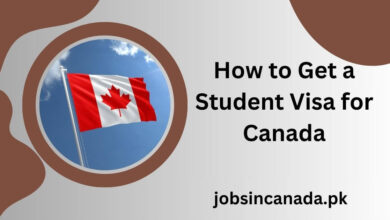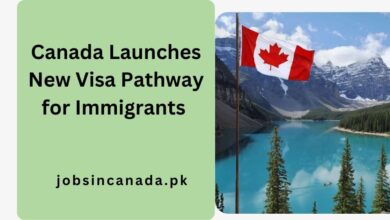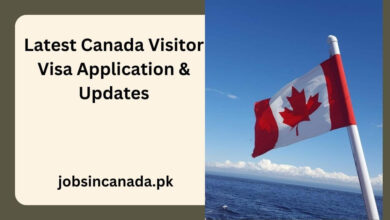Canada Temporary Resident to Permanent Resident Pathway

In the ever-evolving immigration environment of Canada, a revolutionary pathway has emerged that provides temporary residents with opportunities and new prospects for becoming permanent residents (TR to PR pathway). Consequently, it establishes a connection to a more promising future for individuals who have made significant contributions to Canada and aspire to establish it as their permanent residence.
Continue reading as we explore this innovative program, as we determine the prerequisites, and recognize the significant potential it offers to potential immigrants from Canada.
The temporary resident to permanent resident (TR to PR) pathway in Canada is a promising opportunity for certain temporary residents in this dynamic arena, as the immigration landscape is constantly evolving. This innovative program enables individuals and their families who meet the criteria to apply for permanent residence, thereby creating opportunities for a more prosperous future in Canada.
Eligibility (who qualifies for entry into the TR to PR Pathway)
Certain prerequisites must be satisfied for an individual to advance through the TR to PR pathway. The eligibility requirements include the following:
- A minimum of one year of full-time work experience, 1,560 hours, or one year of part-time work experience in critical occupations or the healthcare industry is required.
- Recent graduates should capitalize on this opportunity, even though the eligibility criteria have been fulfilled.
Check Also: University of Alberta Scholarships – International Undergraduate
Benefits for Canada Temporary Resident to Permanent Resident Pathway
- Pathway for Temporary Foreign Workers, Students, and Work Permit Holders: The TR to PR pathway enables temporary residents in Canada, including international students and foreign workers, to file for permanent residency without the need to depart the country. This can offer a greater sense of security and stability than the necessity of renewing temporary permits or visas.
- Eligibility for Temporary Residents Who Are Currently in Canada: It offers a direct pathway for individuals who are currently residing and working in Canada on transitory permits to become permanent residents, thereby fostering their long-term commitment to the Canadian economy. Transitioning to Canadian society may be simpler for many individuals who are already assimilated, as opposed to those who are applying from abroad.
- Economic Benefits and Labor Market Contribution: Temporary foreign workers are frequently already employed in the Canadian labor market, and this pathway motivates them to maintain their contributions to sectors that are experiencing labor shortages. It is beneficial to address deficiencies in critical sectors, including agriculture, technology, and healthcare.
- Assistance for International Students: This pathway may also be available to international students who have completed their studies at Canadian institutions and have acquired work experience through post-graduation work permits (PGWPs). This offers them the chance to remain in Canada and continue to make a positive impact on the economy.
- Enhanced Immigration Opportunities for Critical Sectors: Specific pathways are designed to meet the needs of specific sectors that require skilled labor. For instance, individuals in high-demand professions, essential workers, and healthcare workers may be prioritized, which facilitates their application for permanent residency.
- Streamlined Incorporation into Canadian Society: Temporary residents, including students and laborers, are already acquainted with the customs, culture, and systems of Canada. This familiarity can facilitate a more successful and seamless transition to permanent residency, as they are already assimilated into their communities.
- Enables Family Reunification: For those who are applying under the TR to PR pathway, it may also facilitate family reunification. Upon obtaining permanent residency, the principal applicant may sponsor their family members to immigrate to Canada, thereby promoting family unity.
- Benefits of Permanent Residency: Permanent residents are entitled to a diverse array of benefits, such as the freedom to reside, work, and study in any location within Canada, as well as access to healthcare and social services. Permanent residency also facilitates the process of obtaining Canadian citizenship, provided that residency and other prerequisites are satisfied.
- Reduced Processing Times: The TR to PR pathway is a more efficient option for individuals seeking to secure permanent residency swiftly, as it enables the processing of applications at a faster pace than other immigration streams in certain circumstances.
- Enhanced Labor Force Participation: The TR to PR pathway ensures a stable, qualified workforce in a variety of industries, particularly in critical sectors, by enabling a greater number of temporary residents to transition to permanent status. This is advantageous to the overall economy of Canada.
Application Limit
The TR to PR pathway is subject to the following application limitations:
- A reserve of 20,000 healthcare personnel from Canada
- The essential personnel of Canada is allocated 30,000 dollars.
- Foreign graduates of Canadian universities are allocated 40,000 dollars. The upper limit of this category has been reached.
- There are an infinite number of available positions for healthcare professionals who are fluent in French in Canada.
- There are an infinite number of positions available for French-speaking vital workers in Canada.
- International graduates from Canadian universities who are fluent in French are eligible for an unlimited number of positions.
Eligibility for Healthcare and Essential Worker Streams
The following requirements must be met by candidates in the healthcare and vital worker streams.
- Initially, the possession of a valid immigration status
- Additionally, employment in Canada during the application process
- Furthermore, intending to reside outside of Quebec
- Additionally, possessing a minimum of one year of qualifying work experience (equivalent to 1,560 hours) within the past three years
- Additionally, it is necessary to exhibit a minimum level of language proficiency equivalent to the Canadian Language Benchmark 4 in each language ensemble, which encompasses speaking, reading, writing, and listening.
List of Eligible Occupations
The TR to PR pathway encompasses a diverse array of essential occupations that are eligible, spanning a variety of fields and industries. Some of the eligible National Occupational Classification codes are as follows:
- NOC 6,611 pertains to cashiers.
- NOC 7,241 — Electricians (excluding industrial and power systems)
- NOC 7,511 – Drivers of transport trucks
- Residential and commercial installers and service providers are included in NOC 7,441.
- Harvesting laborers comprise NOC 8,611.
- NOC 9,431 pertains to operators of sawmill machines.
- Laborers engaged in the processing of fish and seafood, among other occupations, comprise NOC 9,618.
For Healthcare Workers, eligible occupations include;
- Dentists are classified as NOC 3,113.
- Medical sonographers are classified under NOC 3,216.
- Social professionals are classified as NOC 4,152.
- Dental assistants are classified as NOC 3,411.
- Nurse aides, orderlies, patient service associates, and other healthcare-related occupations are included in NOC 3,413.
The TR to PR pathway offers an exceptional opportunity for temporary residents and recent graduates to become permanent residents of Canada. It is a testament to Canada’s commitment to cultivating its vibrant society and welcoming talented individuals. As the immigration landscape in Canada continues to evolve, this road signifies potential and transformation for numerous aspirant immigrants.
In addition to being a policy, the TR to PR pathway guarantees inclusivity and growth. Individuals who have temporarily relocated to Canada are presented with a plethora of opportunities and possibilities as the sun sets on one leg of their voyage and rises on another.
We trust that this comprehension of the TR to PR pathway has facilitated the journey of individuals who aspire to establish their aspirations in Canada. Canada is welcoming new members into its diverse and vibrant tapestry, and the future appears promising.
Is Canada PR Easy?
This section will address the ease of obtaining Canadian permanent residence in 2023. For a long time, Canada has been a popular destination for immigrants from around the globe due to its stunning landscapes and diverse opportunities.
In, Canada will surpass a significant population milestone with 40 million citizens. This achievement is indicative of the country’s increasing popularity and allure. This extraordinary statistic obscures a multifaceted immigration landscape that demands a more thorough examination. This comprehensive investigation investigates the current state of immigration to Canada, the challenges it presents, and the most effective pathways for potential immigrants.
The Reality of Immigration to Canada
Navigating the changing landscape
By 2023, the immigration conundrum will achieve equilibrium between transient and long-term residents. Canada’s population of 40 million is a noteworthy achievement. Astonishingly, 2.1 million of those individuals are classified as transitory residents. This may not seem remarkable at first glance; however, it becomes significant when we consider the diverse array of transient residents.
This category includes international students, foreign personnel, and tourists who are visiting Canada. In this community of temporary residents, a substantial 1.5 million individuals, including both bearers of open and closed work permits, are classified as workers.
Furthermore, it has been reported that nearly 900,000 applications for international student status have been submitted this year. The vast number of impermanent residents in Canada is evident in these statistics.
The Path to Permanent Residency
A Glimpse into the Immigration Quotas
A significant number of these transient citizens aspire to establish permanent residence in Canada. However, the path to permanent residency is becoming increasingly challenging due to the significant discrepancy between the number of temporary residents and the PR quotas. Every year, Canada receives more than 500,000 new permanent residents.
This figure remains significantly lower than the 2.1 million temporary residents who are seeking a secure future in Canada, despite a slight increase.
The Predicament of Aspiring Immigrants
Prospective immigrants are placed in a challenging position as a consequence of this disparity. They are required to negotiate an immigration environment that is both intensely competitive and constrained. Programs such as the temporary resident to permanent residence (TR to PR) pathway offer some optimism; however, the overwhelming volume of applications has heightened competition and pushed the required minimum comprehensive ranking system (CRS) scores to previously unheard-of thresholds. It is no longer logical to anticipate a significant decrease in CRS cut-offs, even in specific illustrations.
Strategic Pathways for Aspiring Immigrants
In light of these challenges, prospective immigrants must devise a strategic approach to realize their aspirations of residing in Canada. The following are several significant routes to consider:
1. Provincial Nominee Programs (PNPs)
PNPs offer a practical route to permanent residence. The likelihood of a candidate being selected in the express entrance lotteries is significantly enhanced when they receive provincial nominations, as they accumulate a greater number of CRS points. Therefore, it is essential to guarantee that no PNP option is illuminated by
2. Skilled Trades
Skilled professions are still in high demand in Canada. To enhance their eligibility, prospective immigrants who possess vocational abilities should obtain certifications and licenses. The skilled trades pathway offers the potential to accumulate 50 additional CRS points and obtain a job offer.
3. Labor Market Impact Assessment (LMIA) Job Offers
The capacity to request an LMIA from an employer can be a game-changing factor. Your CRS score and prospects can be significantly enhanced by genuine job offers that align with your qualifications and abilities.
4. French language proficiency
The significance of the French language One cannot exaggerate the significance of mastering the express entry system. Consider studying French as a second language and striving for a higher level of proficiency in order to accumulate substantial CRS points.
5. Category-Based Draws
Category-based drawings are a permanent fixture and offer a pathway to permanent residency for individuals with specific qualifications and expertise. Choose an occupation from one of these categories and accrue a minimum of six months of work experience in it within the past three years to enhance your chances of participating in category-specific draws.
The population of Canada is 40 million. Milestone is a testament to the country’s allure and legend. The immigration landscape, however, presents unique challenges, particularly for the 2.1 million transitory residents who aspire to become citizens. Although there is still a significant amount of competition, there are effective strategies for aspiring immigrants to navigate this environment.
Provincial nomination programs, specialized trades, employment offers, fluency in French, and category-based draws are all promising avenues. By adopting a strategic approach and remaining informed about evolving immigration regulations, individuals can enhance their likelihood of realizing their Canadian aspirations in 2023 and beyond.
As we conclude our examination of immigration to Canada in, one thing is evident. The Canadian ideal is still very much alive and well, but it presents its own distinct opportunities and obstacles. In order to effectively navigate this ever-changing environment, it is essential to possess a clear understanding of your objectives and a diligent approach.
It is important to bear in mind that your voyage is an integral component of the dynamic narrative of Canada, whether you are striving to become a permanent citizen, seeking solace in one of its numerous diverse communities, or contributing your skills to its expanding economy.
For the most recent information on visa-sponsored jobs, prospective paths, benefits, application processes, and other topics, please visit Newsnowgh.com.
Fraquality Asked Question:
-
Can a temporary worker apply for PR in Canada?
If you are working with a Canadian employer on a temporary work permit, and the employer has made you an offer for permanent employment, you may be eligible to apply for your permanent residency under the Federal Skilled Worker Program. Such an offer is referred to as arranged employment.
-
How to change from temporary resident to permanent resident?
Use Form I-485 (Application to Register Permanent Residence or Adjust Status) to apply for permanent residence while in the United States. Each year, USCIS rejects or denies thousands of I-485 applications. Therefore, it’s important to get it right.
-
Is there a new TR-to-PR pathway?
Although the TR-to-PR pathway is no longer available, the journey from TR to PR remains open and accessible through various other immigration programs. These current programs are designed to cater to different circumstances and offer distinct advantages.




